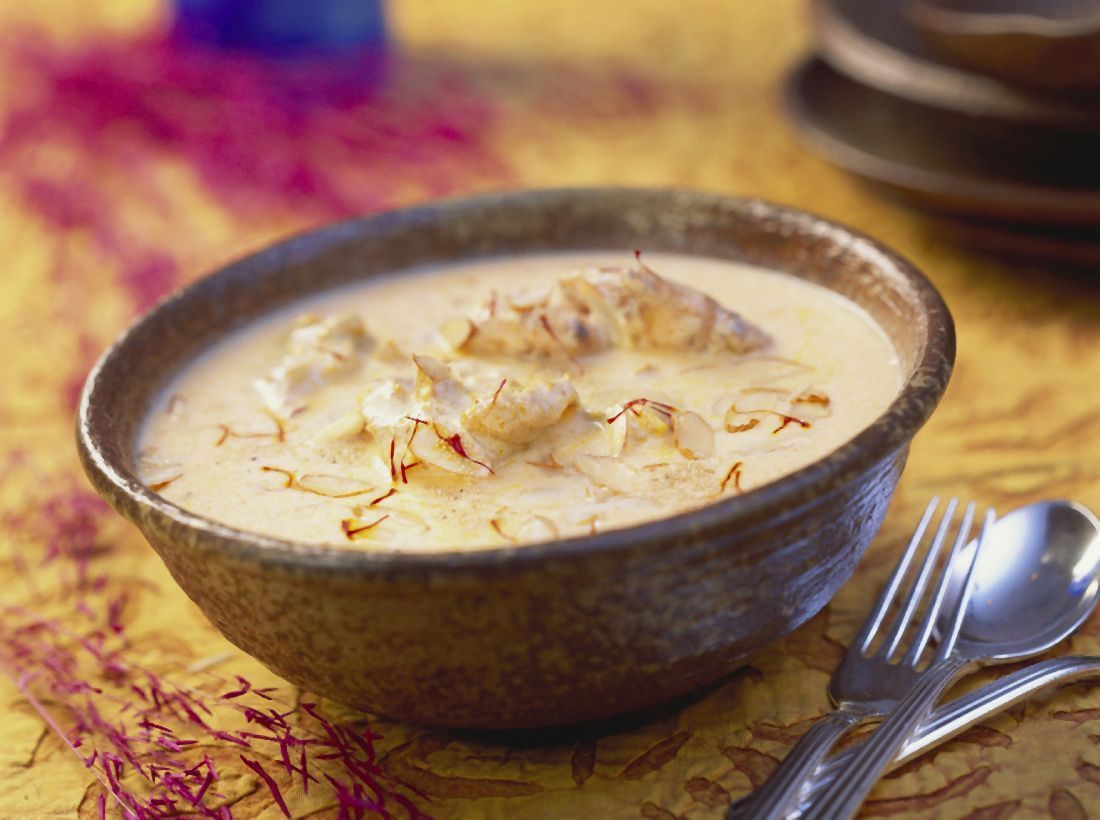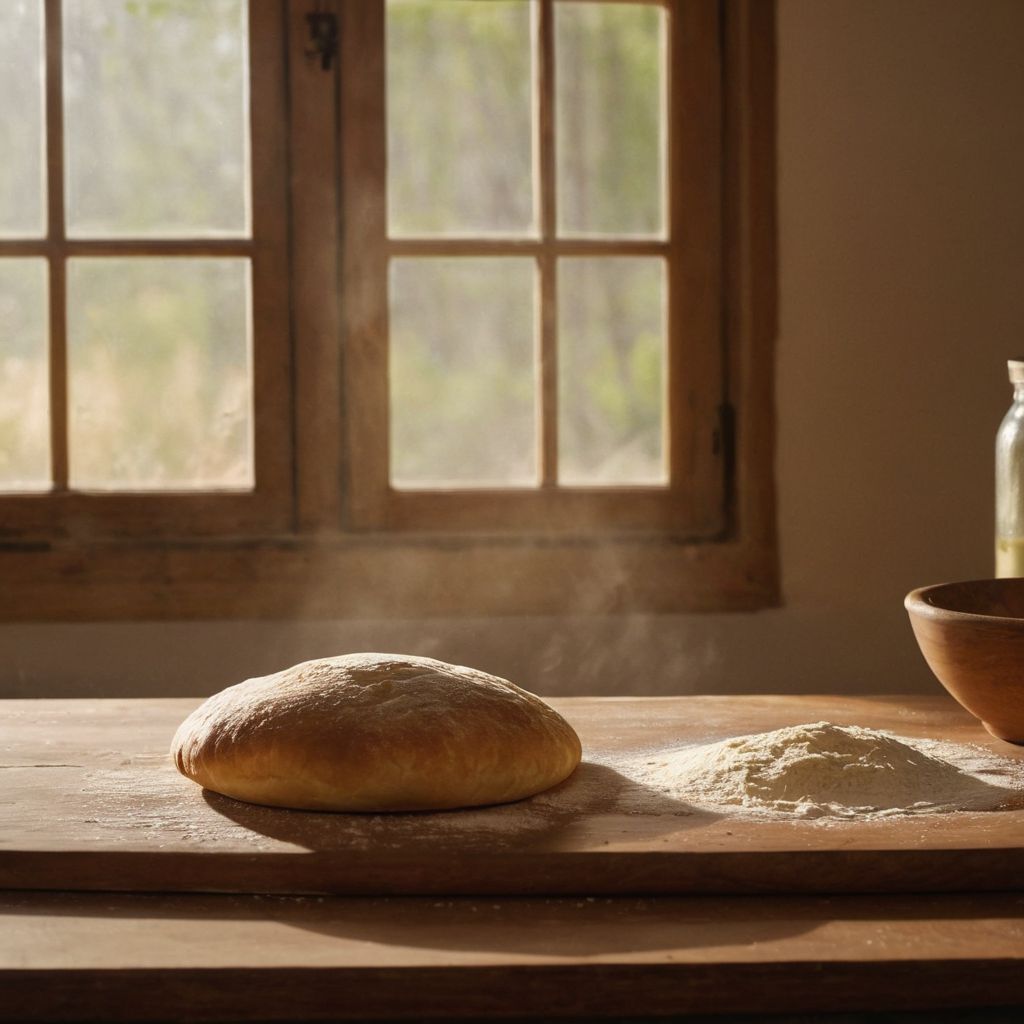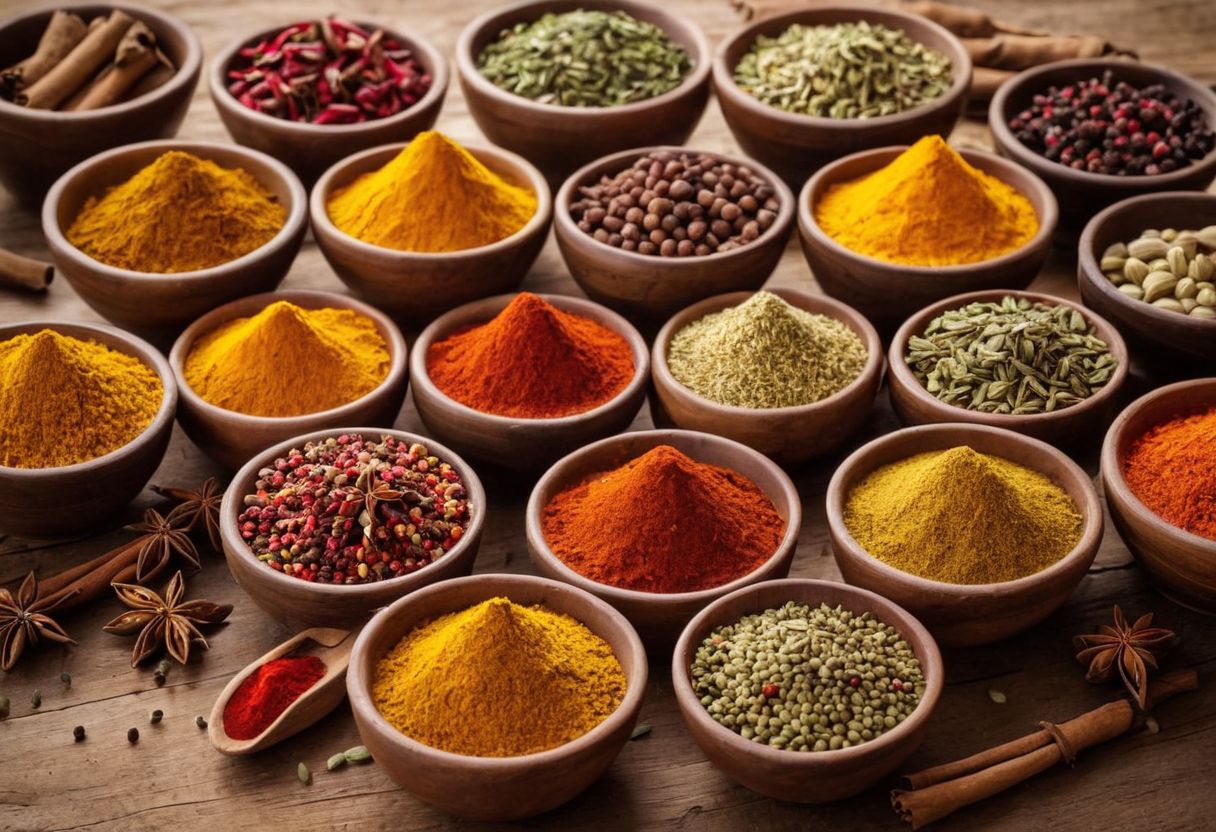Imagine a steaming bowl of Indian chicken soup, brimming with rich flavours and aromatic spices.
Finding the perfect recipe with the right balance of ingredients and spices can be challenging.
Indian chicken soup is traditionally made with a blend of whole garam masala spices, onions, and ginger-garlic paste, simmered with chicken to create a comforting and flavourful broth.
In this blog, we’ll explore everything from the essential ingredients and cooking steps to the nutritional benefits and creative uses of Indian chicken soup, ensuring you can master this delightful dish at home.
Essential Ingredients for Indian Chicken Soup

Crafting the perfect Indian chicken soup begins with selecting the right ingredients. Essential to any traditional recipe are chicken, onions, ginger, and garlic, which form the base of the soup. Spices like turmeric powder, cumin seeds, and peppercorns add depth and warmth, while curry leaves introduce a distinctive South Indian flavour. The inclusion of these spices not only enhances taste but also contributes to the soup’s aromatic allure.
For a richer texture and additional layers of flavour, ingredients like tomatoes and coriander leaves are often incorporated. These components work harmoniously to create a robust foundation for the soup. Coconut milk can be added for creaminess, altering the soup’s consistency and adding a subtle sweetness that balances the spices. Each ingredient plays a pivotal role, ensuring the chicken soup is not only comforting but also resonates with the authentic taste of Indian cuisine.
Choosing the Right Chicken Parts

When preparing Indian chicken soup, choosing the right chicken parts can significantly influence the broth’s flavour and richness. Chicken thighs and legs, known for their juiciness and flavour, are ideal as they lend a more robust taste. Bone-in pieces are preferable as the bones contribute to a deeper, more complex broth. However, for a leaner option, chicken breasts can also be used, though they offer a lighter flavour and less fat.
Equipment Checklist for Indian Chicken Soup
To make Indian chicken soup, several key pieces of equipment are necessary. A pressure cooker or a large pot is essential for simmering the soup and developing flavours. Additionally, a blender or grinder is useful for finely mixing spices like cumin seeds and peppercorns. For those who prefer a clearer soup, having a fine strainer is beneficial to remove solids after cooking. Ensuring you have these tools on hand will facilitate a smoother cooking experience and yield a more authentic taste.
Step-by-Step Cooking Instructions
Preparing Indian chicken soup involves a series of careful steps to ensure that the flavours are perfectly blended. Start by heating a tablespoon of oil or ghee in a deep pot or pressure cooker. Once hot, add finely chopped onions, garlic, and ginger, sautéing until they turn golden. This process, known as tempering, releases the aromatic flavours essential for a good base. Next, add the chicken pieces (preferably bone-in for more flavour), turmeric powder, and any other spices like cumin and peppercorns. Stir well to coat the chicken evenly with the spices.
After the chicken is well mixed with the spices, pour in enough water to cover the chicken and bring to a boil. Once boiling, reduce the heat to a simmer and let it cook until the chicken is tender and the flavours are well combined. If using a pressure cooker, this will take about 20 minutes; in a regular pot, it might take up to an hour. During the last few minutes of cooking, add chopped tomatoes and coriander leaves for an extra layer of flavour. Remember to check the seasoning and adjust salt and pepper according to taste. This step-by-step method ensures that the chicken soup is rich in flavour and comforting in texture.
Expert Tips for Perfect Indian Chicken Soup
To elevate your Indian chicken soup to the next level, consider these expert tips that harness the power of traditional spices and techniques. Firstly, use freshly ground black pepper and cumin just before serving to enhance the soup’s aroma and flavour. Secondly, if the soup lacks tanginess, add a teaspoon of fresh lemon juice; this will also help cut through the richness of the soup. Lastly, for those who enjoy a bit of heat, a pinch of freshly ground garam masala can be added at the end of cooking. These simple yet effective tips will help you achieve a perfect balance of flavours in your homemade Indian chicken soup.
Nutritional Profile of Indian Chicken Soup
Indian chicken soup is not only a comfort food but also a powerhouse of nutrition. A typical serving contains about 184 calories, with a substantial 12g of protein which is about 24% of the daily value. It’s relatively low in fat, providing 11g, and includes 3g of saturated fat. The soup is also a good source of vitamins and minerals, notably Vitamin A and Vitamin C, which are crucial for immune function and skin health. Additionally, it offers potassium, calcium, and iron. Here are some key nutritional highlights:
- Low in sodium: Only 66mg, making it a heart-healthy choice.
- Rich in fibre: Contains 2g of dietary fibre per serving, aiding in digestion.
- Source of carbohydrates: Provides 9g, which helps to fuel the body.
These nutrients make Indian chicken soup a beneficial addition to any diet, supporting overall health and well-being.
Indian Chicken Soup as a Natural Healer
Indian chicken soup has long been cherished not just for its delightful taste but also for its therapeutic qualities. Traditionally, it is considered a natural remedy for common ailments like colds and flu. The warmth of the soup helps in alleviating congestion, while the steam aids in opening up nasal passages. Ingredients such as ginger and garlic are added which are known for their anti-inflammatory and antibacterial properties, making this soup a go-to comfort food during illness.
Beyond just cold relief, this soup is believed to aid in digestion and soothe upset stomachs. The broth, rich in nutrients from the chicken bones, is easily digestible and helps in nourishing the body and boosting the immune system. Here are some ways Indian chicken soup serves as a healer:
- Boosts immunity: The amino acids in chicken help in building a stronger immune system.
- Soothes the throat: The warm broth can relieve sore throats.
- Hydrates the body: Being a liquid, it helps in keeping the body hydrated, especially important when one is sick.
Variations of Indian Chicken Soup
Indian chicken soup is a versatile dish that varies widely across different regions of India, each adding its unique twist to this comforting classic. In the northern regions, the soup often incorporates creamy textures with the addition of yoghurt or cream, while in the southern parts, tamarind and coconut milk are popular for their tangy and rich flavours.
Personal preferences also play a significant role in the variations of Indian-style chicken soup. Some might prefer a spicier version by adding more green chillies or pepper, whereas others might enjoy a milder, herb-infused version. This adaptability not only makes Indian chicken soup a culinary delight but also a reflection of individual tastes and regional culinary traditions.
Serving Indian Chicken Soup: Tips & Ideas

When serving Indian chicken soup, it’s essential to consider both flavour and presentation to enhance the dining experience. Garnishing with fresh coriander leaves and a squeeze of lemon juice can add a vibrant taste and look. For a more filling meal, serve the soup with a side of steamed basmati rice or warm naan bread. Additionally, small bowls of crispy fried onions or chilli oil can be provided, allowing guests to customise their soup to their liking.
Storing Indian Chicken Soup the Right Way
To preserve the freshness of Indian chicken soup for later enjoyment, it’s crucial to store it correctly. Immediately after cooking, cool the soup quickly by placing the pot in a sink filled with ice water, stirring occasionally to lower the temperature evenly. Once cooled, transfer the soup into airtight containers and refrigerate within two hours of cooking to prevent bacterial growth. For optimal freshness, consume refrigerated soup within three to four days. If you need to store it longer, freeze the soup in sealed containers or heavy-duty freezer bags, where it can last for up to two months. When reheating, ensure the soup reaches a temperature of 74°C (165°F) to safely enjoy its rich flavours once more.
Creative Uses for Leftover Indian Chicken Soup
Transform leftover Indian chicken soup into a versatile base for other dishes to ensure minimal waste and maximized flavour. Consider using it as a sauce for pasta by reducing it slightly on the stove and tossing it with freshly cooked noodles. Alternatively, mix it into risotto for a rich, flavourful twist or use it as a marinade for shredded chicken that can be used in tacos or wraps. These creative uses not only enhance the soup’s utility but also introduce exciting new tastes to your meals.
Indian vs. Country Chicken Soup: Understanding the Difference

Indian chicken soup and country chicken soup, while both rooted in Indian culinary traditions, offer distinct experiences in taste and preparation. The former typically features a milder flavour with a clear broth, often incorporating a variety of vegetables and gentle spices. On the other hand, country chicken soup, known locally as ‘Naatu Kozhi Soup’, is renowned for its robust and spicy flavour profile, using native country chicken which is tougher but flavourful.
The key differences between these two types of soups include:
- Base Ingredients: Indian chicken soup often uses broiler chicken which cooks quickly and is relatively tender, whereas country chicken soup uses tougher, free-range country chicken, enhancing the soup’s depth of flavour.
- Spice Levels: Country chicken soup is typically spicier, incorporating a broader range of local spices and sometimes even whole spice blends, compared to the milder Indian chicken soup.
- Cooking Time: Due to the tougher nature of country chicken, the soup generally requires a longer cooking time to achieve the desired tenderness and to fully extract the flavours from the spices.
Elevate Your Culinary Journey with INDULGE
Embarking on a culinary journey with INDULGE means diving into a world where traditional and international flavours blend seamlessly. Imagine savouring a bowl of Indian chicken soup in Zurich, enriched by local ingredients and Swiss culinary techniques. INDULGE offers such unique experiences, where dishes like the aromatic Indian chicken soup are reimagined with Swiss twists, providing an unforgettable taste adventure.
By participating in INDULGE‘s curated tours, food lovers explore not just Swiss specialties but also global cuisines right in the heart of Zurich. Key highlights include:
- Tasting sessions that include a Swiss version of Indian chicken soup.
- Interactive cooking classes with expert chefs who specialise in both local and international dishes.
These experiences not only enhance your culinary skills but also deepen your appreciation for global gastronomy.
Frequently Asked Questions
Which part is best for chicken soup?
When preparing Indian chicken soup, chicken thighs and legs are ideal as they lend a more robust taste to the broth. Bone-in pieces are preferable as they contribute to a deeper, more complex broth. However, chicken breasts can also be used for a leaner option, though they offer a lighter flavour and less fat.








